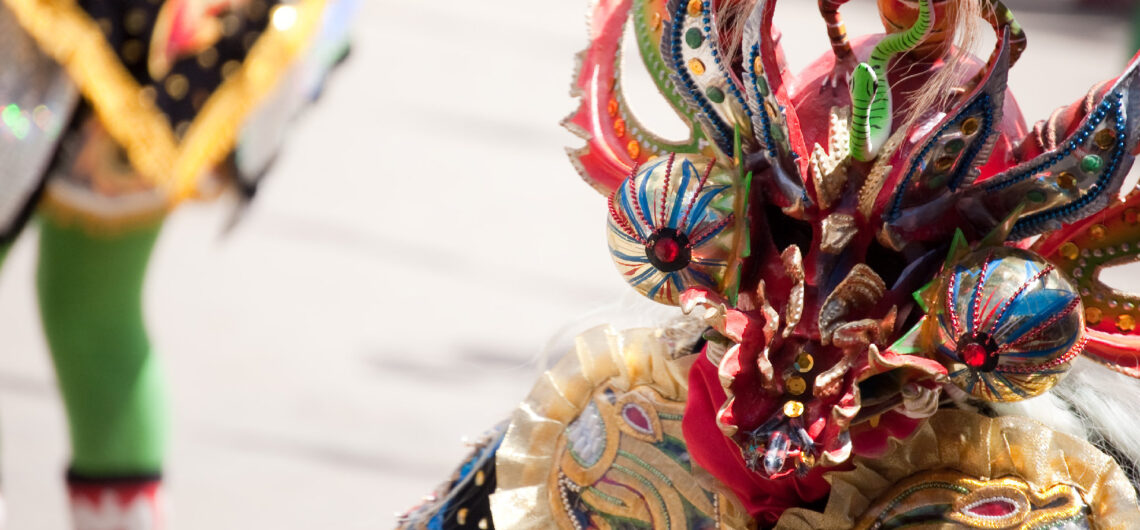Festivals in Peru, La Diablada
At this time of year in Peru, many colorful festivals begin leading up to Holy Week. One of the most famous takes place in Puno by Lake Titicaca in early February called. La Virgen de La Candelaria, which features hundreds of traditional dances and brilliant masks and costumes. This year it is estimated that some twenty thousand tourists will go to Puno to see the festival. You can read in more detail about the festival and its history in a previous blog post, Peru’s Vibrant Candelaria Festival – Puno.
One of the most well-known dances at the festival is called la danza de la Diablada, which translates as the Devil’s Dance. The dance has roots in the Altiplano of Peru, Bolivia and Chile and in 2003 was named a part of Cultural Heritage of Peru. While the Diablada is not exclusive to La Virgen de La Candelaria, it is one of the most popular because of the ornate costumes and the bright masks worn by dancers representing the devil or forces of evil.
There are various versions of the dance’s origin, but essentially, the theme of the dance is the constant struggle between good and evil, with St. Michael the Archangel representing good and the devils representing evil. The dance is an example of syncretism, fusing the Christian tale of St. Michael leading God’s armies against the forces of Satan in the New Testament with the Aymara legend of Supay and the miners. The narrative goes that miners were trapped in a cavern by Supay, the deity of evil who lived inside of the earth, when La Virgin saved them from the fiery cavern. From a combination of these two tales, the dance takes its roots. Over time the choreography has changed and become more dynamic and forceful, making it quite a spectacle to behold.
Likewise, the costumes are fantastically elaborate, made with gold and silver embroidery, precious stones and rich fabrics. Some of these costumes can weigh up to 30kg (60 lbs)! Imagine walking with so much weight much less dancing! Costume makers begin as early as August to prepare for the festival, and the result is a dazzling show, the fight between good and evil in which the good triumphs.
For more information about festivals in Peru, check out our festivals page or contact us about planning a trip to coincide with one of these celebrations.

